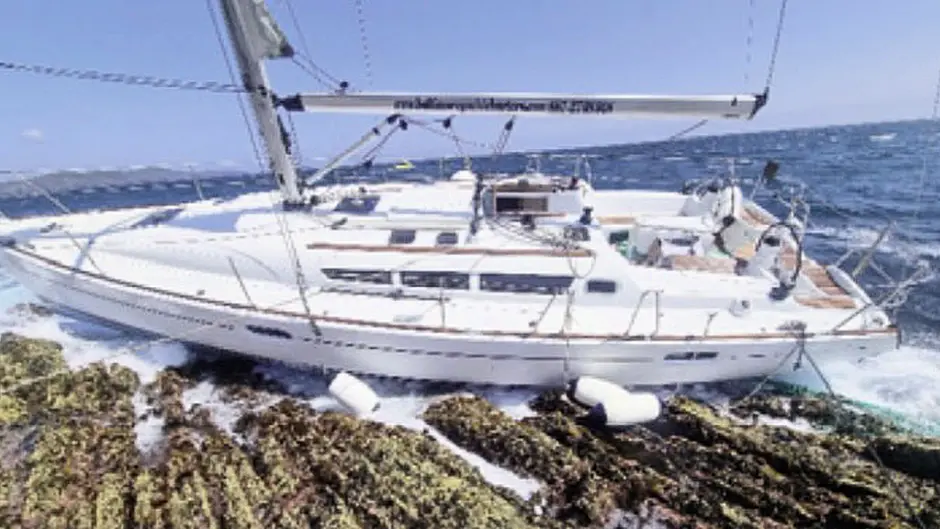A DISCARDED or lost fishing net was the cause of a 12m sailing yacht foundering on rocks off Cape Clear island and being completely lost last summer, the Marine Casualty Investigation Board (MCIB) has said.
A report into the incident, published this week, said the yacht, Inish Ceinn, left Baltimore with five people on board, on June 6th at 2pm for a short voyage over to Cape.
The skipper was a well-qualified and experienced yacht master and diver who lived on the island and had made the trip many times and all crew were wearing personal flotation devices.
Three of the others were experienced crew, including a 13-year-old relation, and there was one other guest.
A half-hour after the boat left Baltimore on the half-mile trip, the skipper felt the yacht slowing rapidly and it turned into the wind.
Nothing could be seen in the water, so the engine was started and propeller engaged. Vibration was felt and a burning smell was noticed. The skipper shut off the engine but the wind and swell quickly pushed the yacht towards the rocks and it went aground.
Four of the persons onboard were able to get onto the rocks and the skipper sent a mayday message on the VHF radio and then climbed onto the rocks. At this stage he noticed the hull was fouled with a large trawl net.
Soon after, the Baltimore lifeboat came to the rescue and the rescue helicopter R115 also attended the scene. All five persons were evacuated from the rocks by the lifeboat and taken back to Baltimore. The yacht broke up and was lost but, thankfully, there were no serious injuries and no pollution.
The MCIB report noted that the vessel had just completed a full refit at a nearby boatyard and this its first voyage the day after the refit.
Visibility on the day was good and there hadn’t been any weather warnings. No warnings were in force at the time of the incident.
As the vessel was starting to lift onto the rocks, the skipper also had to abandon the vessel and he climbed onto the rocks. It was at this stage he noticed the large bright green trawl net that was wrapped around the keel, rudder and propeller. Up to then he was unaware of what had fouled the hull.
The net can be clearly seen in photographs that were taken by the crew members on the rocks.
The net was green and would be very hard to see in a choppy sea, the reported stated. There were no buoys or markers attached to make it visible. This was a large trawl net and when it fouled the bulb keel it would have trailed onto the rudder and the propeller.
When the engine was started, and the propeller was clutched in, the net would have been wrapped tightly around the propeller causing the clutch to burn, producing the smell that the skipper became aware of. There was very little anyone onboard could do in this situation, the report stated.
The net was a large trawl net that had either been discarded from a fishing trawler or had broken loose and had not been recovered.
This lost or discarded trawl net was the direct cause of this casualty, however it could not be determined whether the net had or had not been tagged.
The MCIB said that lost fishing gear whether abandoned, lost, or otherwise discarded, can exist for many years, entrapping all types of marine life. It can also pose serious navigational threats to vessels. As most of it is made from plastic, it can take years to degrade.
‘The environmental damage is not only to vessels on the water, but also to marine life due to ghost fishing,’ it states. ‘Nets are required to have identification tags so the vessel can be identified if these tags are in place. In cases where the net has been discarded and the tags removed, it is virtually impossible to identify the source of the net.’







